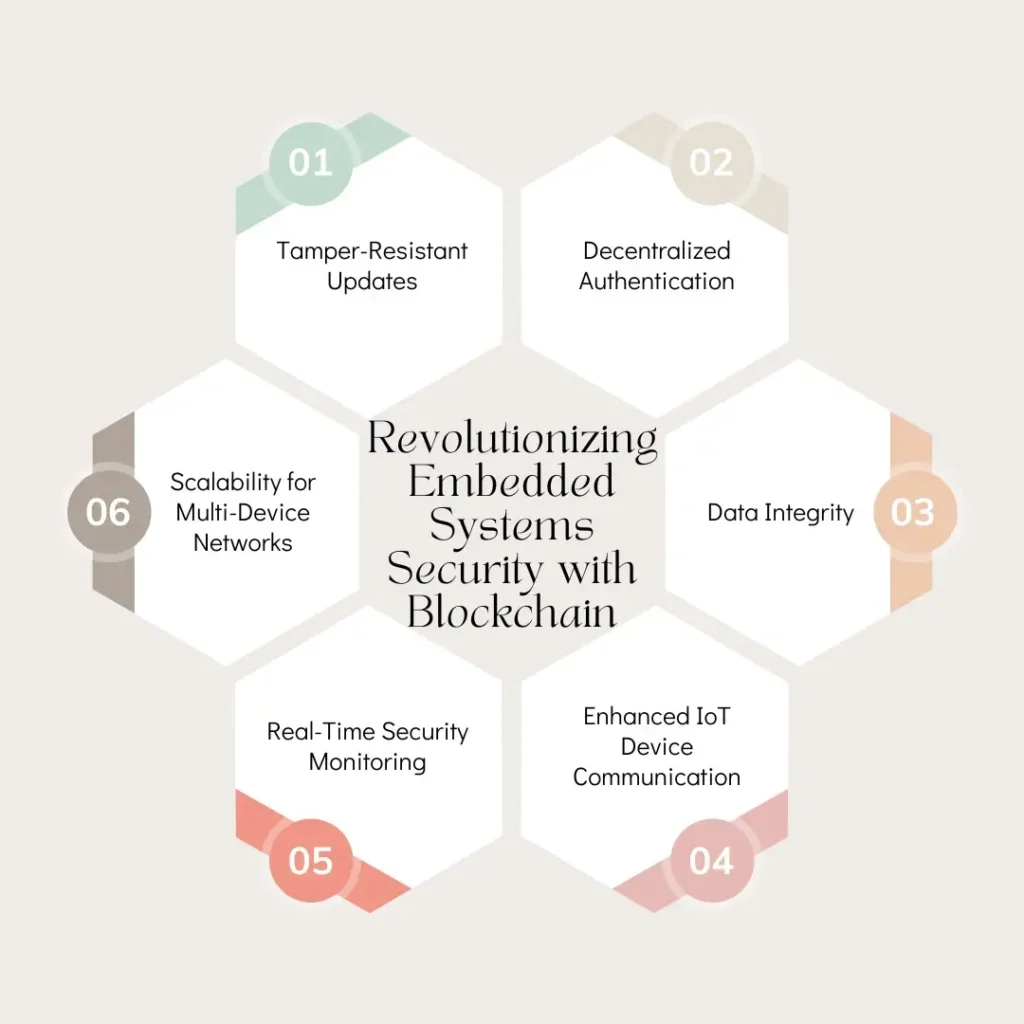Introduction
Embedded systems are at the core of countless technologies, from IoT devices to industrial machines, but their security and reliability have long been major concerns. With the rise of blockchain technology, there’s now a powerful way to enhance how embedded systems operate and communicate.
In this guide, we’ll explore how blockchain is being integrated into embedded systems applications and why this innovation is shaping the future of secure, autonomous technology.
What are embedded Systems?
Embedded systems are specialized computing units designed to perform specific tasks within larger devices. These systems are used in a wide range of applications, such as smart home devices, medical equipment, and automotive controls. Despite their importance, embedded systems often face significant security challenges due to their resource-constrained nature.
For an in-depth understanding of embedded systems, check out our detailed guide on VLSI Design vs Embedded Systems.
How Blockchain Secures Embedded Systems
Decentralized Authentication
Blockchain eliminates centralized points of failure by distributing authentication across a network. This makes embedded systems more resilient to cyberattacks.
Tamper-Resistant Firmware Updates
Firmware updates are critical for maintaining device functionality and security. Blockchain ensures that these updates are verified and tamper-proof, preventing unauthorized modifications.
Data Integrity
Blockchain’s distributed ledger technology guarantees data accuracy and consistency across interconnected devices. This ensures the reliability of sensitive data within embedded systems.
Real-World Applications
IoT Security
Blockchain enhances IoT security by securing device-to-device communication. It ensures that data exchanged between devices is encrypted and authenticated.
Automotive Systems
Blockchain protects connected vehicles by enabling secure communication between vehicle components and preventing unauthorized access.
For additional insights into IoT and blockchain, explore our resource on Building a Robot with Arduino.
Challenges of Implementing Blockchain
While blockchain offers significant security benefits, its implementation in embedded systems comes with challenges:
- Resource Limitations: Embedded devices often have limited processing power and storage, making blockchain integration complex.
- Scalability: Managing blockchain across a large network of devices can be resource-intensive and challenging.
- Cost and Complexity: The initial cost of implementing blockchain and the expertise required can be a barrier for many organizations.
Future Trends
- Lightweight Blockchain Protocols: Innovations in blockchain are focusing on lightweight protocols specifically designed for embedded systems.
- AI Integration: Combining blockchain with AI can enable predictive security measures and smarter device management.

Conclusion
Blockchain technology offers a groundbreaking approach to securing embedded systems by addressing vulnerabilities and enhancing trust. By enabling tamper-resistant updates, decentralized authentication, and data integrity, blockchain ensures a robust security framework for modern devices. Whether it’s IoT security or automotive applications, blockchain is paving the way for a secure, interconnected future.